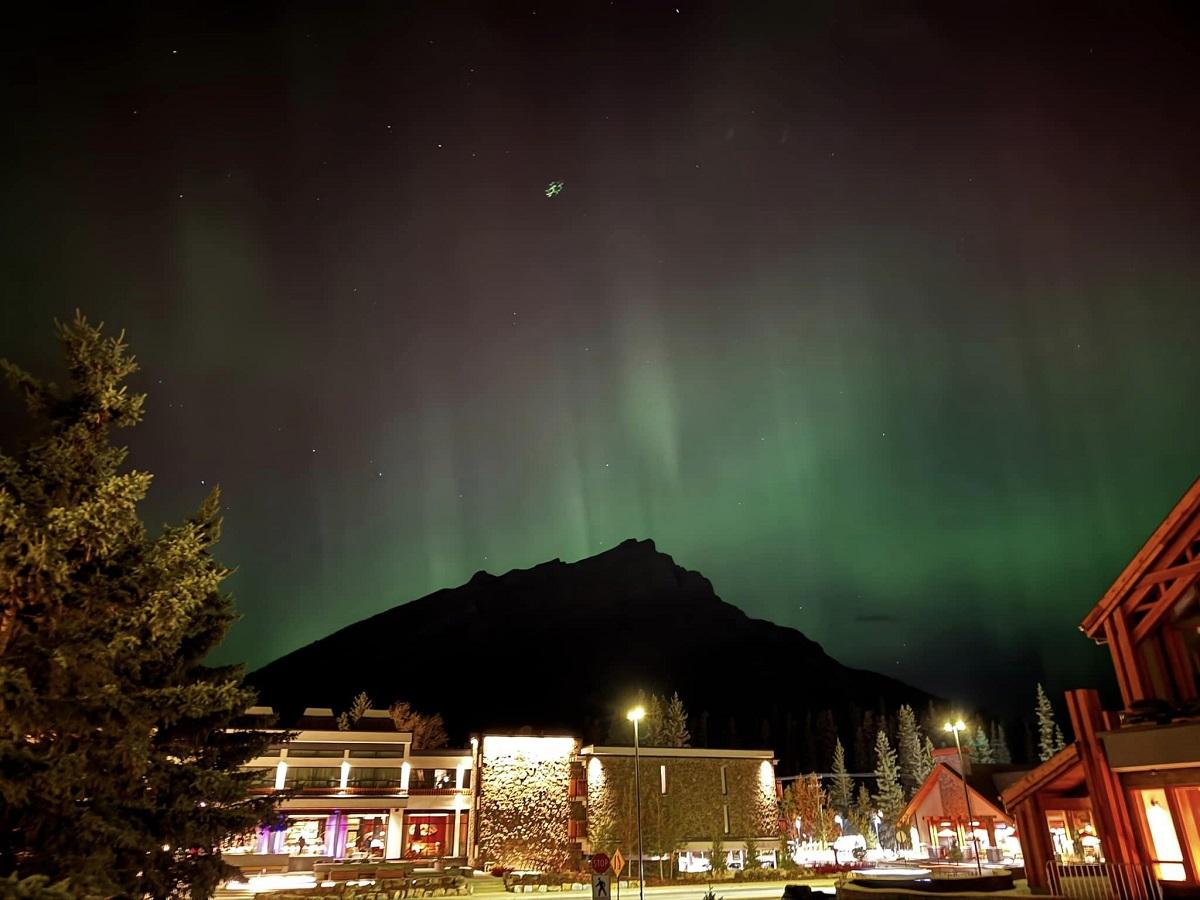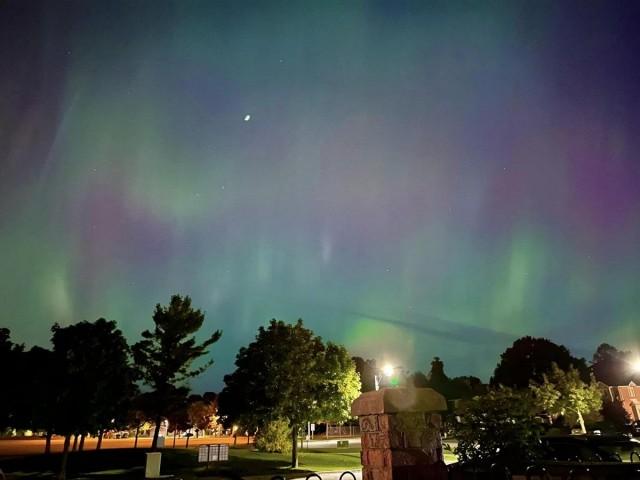Northern Lights delight Filipinos in Canada

RED DEER, Alberta — Filipinos looking to see the magic of the Northern Lights are in for a treat as the chances of spotting the elusive Aurora Borealis increases in Canada.
The northern lights season has begun with nighttime getting longer and the skies clearer.
The northern lights or Aurora Borealis, according to the Canadian Space Agency, are triggered by solar storms dodged by earth’s magnetic field, which in turn drag and stretch launching charged particles down towards earth’s surface that collide with gases in the upper atmosphere, producing billions of tiny flashes of light that appear to “dance” in the sky.
Gratitude
Ontario registered nurse Sheena Acosta, 37, witnessed the breathtaking sky show in mid-October, now a reality fulfilled on her bucket list.
“Canada is truly a beautiful country, especially to those who appreciate its unique charm. I feel incredibly fortunate to call it home,” she said.
Acosta first learned about the Aurora sightings on Facebook. Together with her husband, they took a 30-minute drive seeking a place for viewing. The cloudy skies over Southern Ontario, however, only allowed for a brief peek of the sky show.
Back home as the skies grew darker, Sheena decided to step outside where she was met with shades of pink, purple and bluish-green hues of Aurora.

“My excitement surged; I couldn't contain my joy and began jumping on our patio, calling out to my family — my kids, husband, and in-laws — that the aurora show had begun. I quickly spread the news to friends and coworkers, urging them to step outside and enjoy the spectacle from their homes,” she added.
Acosta and her husband decided to bring their family to Rouge Beach for better outdoor viewing, but due to the fog and light pollution, the light show was barely visible, she said.
Upon returning home, the Aurora lightshow continued into the night and even heightened.
“I couldn’t resist stepping outside. It was a spectacular sight! I felt incredibly fortunate to experience such a wondrous event; Canada truly has its charms,” she said.
Acosta stayed up until 3 a.m. to watch the light display.
This experience prompted Acosta to join the Ontario Aurora Chasers where she learned that several of her friends are among its members.
Inexpensive treasure
Filipina-Canadian Bella Balisi-Bevilacqua recalls her lessons in Earth Science and Astronomy special classes in highschool in the Philippines on Borealis or the Northern Lights and the Australis, or the Southern Lights.
“In our book, for as long as I remember, [it is] a stunning light show produced by the interplay of solar particles with the Earth’s magnetic field and atmosphere,” she said.
On October 10 in Burnaby, British Columbia where she lives with her husband, she was taking her dog for a nightly walk when the dog prompted her to look up.
“Well, what do you know? It was the Aurora! And, yes, it was faint, but I could see it with my naked eye! It was so ethereal and beautiful!” she said.
Balisi-Bevilacqua, a full-time student and an independent contractor, said her encounters with Auroras were mostly accidental. She has an app on her phone that alerts her on forecasts, possible sightings in her area, and the KP index, a strong predictor of Aurora activity.
“I never thought I’d have to see it without chasing it. I thought I would need to travel to Yukon, Interior BC, maybe Alberta, the Territories, or even Iceland to experience the Aurora in delight!” she said.
“This will always be one of those inexpensive but treasured experiences that I know I can keep forever. Being an immigrant in the Great White North is not so bad!” she added.
Top of the world
Meanwhile, another Filipino-Canadian took pride in the poster-perfect combination of the Northern Lights and the world-renowned resort town of Banff in the Canadian Rockies.
Ericson Dizon has been living in Banff, a place he calls “a piece heaven on earth,” for almost twelve years. He started out in the hospitality sector, then in banking and finance, and now works in healthcare industry.
On the side, Dizon has been an amateur radio operator or a “ham operator” for thirty years. He uses radio frequency purely as an enthusiast.
“The magnetic storm that causes the Aurora affects high frequency communication causing it to fail, but on the other hand, very high frequency propagation is enhanced. I am also on the lookout on the intensity of magnetic storms that could have adverse effects on my electronic and radio equipment,” he explained.
On October 10, Dizon received an alert at 3 p.m., prompting him to put his radio frequency devices “in the Faraday cage,” to protect his gadgets from external electromagnetic frequencies such as the magnetic storm occurring in Aurora Borealis.
“The latest sighting was quite intense. In fact it was stronger than the August 8th magnetic storm. Light noise from earth lights of hotels in Banff did not affect the sightings. One can actually take a picture of it just by walking outside on the deck. The magnetic storm started early around 5 p.m. and waned around 6 a.m. the following day,” he said.
“It is amazing to see the aurora borealis because it affirms that you are indeed at almost at the roof of the world. It is surreal to watch neon lights dancing in the sky. It also gives me a feeling of awe of being in a place where the wonder of nature is working at its best,” he added.
On its website, University of Alberta-led aurorawatch.ca in Edmonton City, provides alerts on sightings and tips for better viewing.
“The best advice for viewing aurora is to look north, after dark. Just around or before midnight is an especially good time,” it posted.
A location away from the bright city lights with a good vantage point out in the open will help too, it added. —KBK, GMA Integrated News




